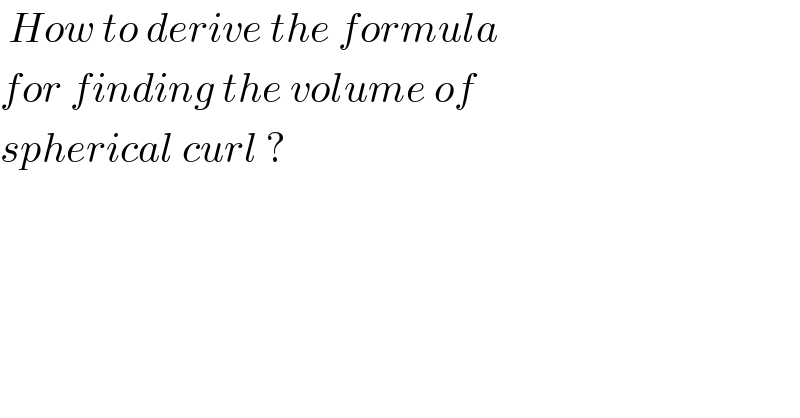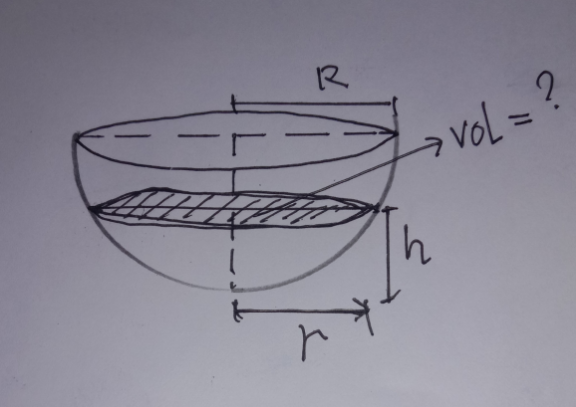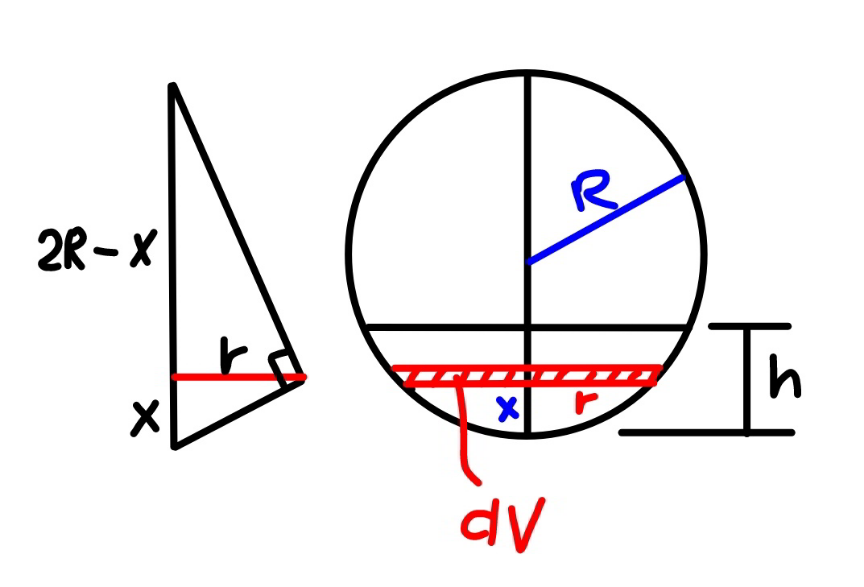
Question and Answers Forum
Question Number 125368 by bemath last updated on 10/Dec/20

Commented by Ar Brandon last updated on 10/Dec/20
https://www.therightgate.com/deriving-curl-in-cylindrical-and-spherical/
Commented by bemath last updated on 10/Dec/20

Commented by bemath last updated on 10/Dec/20

Commented by mr W last updated on 10/Dec/20
![(x/r)=(r/(2R−x)) ⇒r^2 =x(2R−x) dV=πr^2 dx V=π∫_0 ^h r^2 dx=π∫_0 ^h x(2R−x)dx =π[Rx^2 −(x^3 /3)]_0 ^h =π(Rh^2 −(h^3 /3)) =πh^2 (R−(h/3)) ⇒proved with h=R: V=πR^2 (R−(R/3))=((2πR^3 )/3)=hemisphere with h=2R: V=π4R^2 (R−((2R)/3))=((4πR^3 )/3)=sphere](Q125380.png)
Commented by mr W last updated on 10/Dec/20

Commented by bemath last updated on 10/Dec/20

Commented by bramlexs22 last updated on 11/Dec/20
![in other way V = π ∫_(R−h) ^R (R^2 −x^2 ) dx V = π (R^2 x−(x^3 /3))^R _(R−h) =π x(((3R^2 −x^2 )/3))_(R−h) ^R = π [((2R^3 )/3)−(R−h)(((3R^2 −R^2 +2Rh−h^2 )/3))] = ((2πR^3 )/3)−(1/3)π(R−h)(2R^2 +2Rh−h^2 ) = ((2πR^3 )/3)−(1/3)π(2R^3 −3Rh^2 +h^3 ) = πRh^2 −(1/3)πr^3 = πh^2 (R−(h/3)).](Q125432.png)
